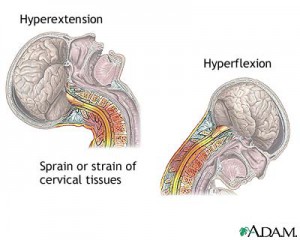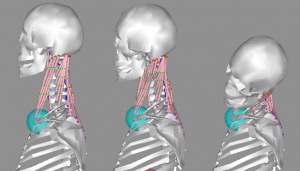 Top 10 symptoms in whiplash injuries. 1 Neck, shoulder pain 2 Stress 3 Sleeping disturbance 4 Lower back Coccyx pain. 5 Teeth grinding or jaw tension 6 Dizziness, vertigo 7 Digestion problems 8 Head ache 9 Anxiety 10 Blurred vision.
Top 10 symptoms in whiplash injuries. 1 Neck, shoulder pain 2 Stress 3 Sleeping disturbance 4 Lower back Coccyx pain. 5 Teeth grinding or jaw tension 6 Dizziness, vertigo 7 Digestion problems 8 Head ache 9 Anxiety 10 Blurred vision.
Whiplash is a crossroad for many. The degree and the consequences can be very different. However, for most people it is a life changer. The body must come first, other things like daily duties and personal accomplishments become secondary.
Let us begin with how whiplash accidents and injuries occur. It is commonly associated with car accidents. Usually a whiplash accident occurs when one motor vehicle strikes another from behind. However, the injury may occur in many other ways, like through practising bungee jumping, amusement park rides, falls and horse riding, in fact is so common that, as a therapist, I would assume you already do suffer from whiplash if you ride horses. Whiplash is one of the main injuries covered by the insurance, 430,000 people made an insurance claim for whiplash in 2007 in England alone. Birth an pregnancy complications can result in a whiplash, and it is very common, some will correct itself some do not. When I resurged some claim that symptoms usually occur within 24 hours, I have to disagree on that, with what I hear from my clients and from my own experience. What I hear and felt is that symptoms can appear long after.
Good advice, if you have an accident, ALWAYS go to the emergency and file a complain about neck pain, in many cases, the pain will appear weeks after the accident. and then it will be more difficult to make the claim. In Denmark it needs to be done within 24 hours.
Consequences of whiplash could be head ache, vertigo, dizziness, tired, jaw tension, shoulder, neck and back pain, difficulty sleeping, difficulty concentrating, digestion problems, frustration, memory loss, depression, constant stress. Because of the whiplash the victim does not have the ability to relax. This can result sensitivity to stressful situations, like family gatherings, job situations, the ability to handle stress is just not sufficient to handle many daily situations. Some clients say that it make them dizzy to stand still, maybe in a line. Of course the symptoms differ a lot from person to person cause to the degree of the whiplash.
But even though you only recognize some of the symptoms you can still have a whiplash, and maybe treatment could be beneficial.
What can be done, the manual therapy on a whiplash is always very gentle, no sudden movement, or pressure is welcome in my opinion.
The nervous system needs to be relaxed in most cases the position of some cranial bones and the hip needs to be corrected because it is pressing the nerves this gives tremendous amount of stress.
The rcpm muscles for sure need attention. (You can see them above).
Also the muscles close to the clavicle might need attention also (you can see this above the rcpm muscles)
The Vomer bone need to be corrected often this is the cause of vertigo, dizziness if not the neck will get stiff again.
Cranial bones specially Sphenoid, Occipital, Zygomatic and the Temporal bone needs correction.
In most cases I hardly do any work on the neck itself, because it is unnecessary, so the relaxation comes from the mentioned corrections.
Whiplash victims is often met with a lot of unfair mistrust about their condition, throughout the systems. For some strange reason it is like it is not a real injury, maybe it is because you can not really see it, like if you loose a finger. And there is not really any excuse, there is so many who feel more or less the same.
Already after the first session, you will feel different, and even though the techniques is very gentle, you will feel big difference. Some describe it as having loads of weight taken of their shoulders. We experienced great success helping whiplash clients, you can ask for a appointment bellow or you can read more in our facebook page Altea-Massage.
